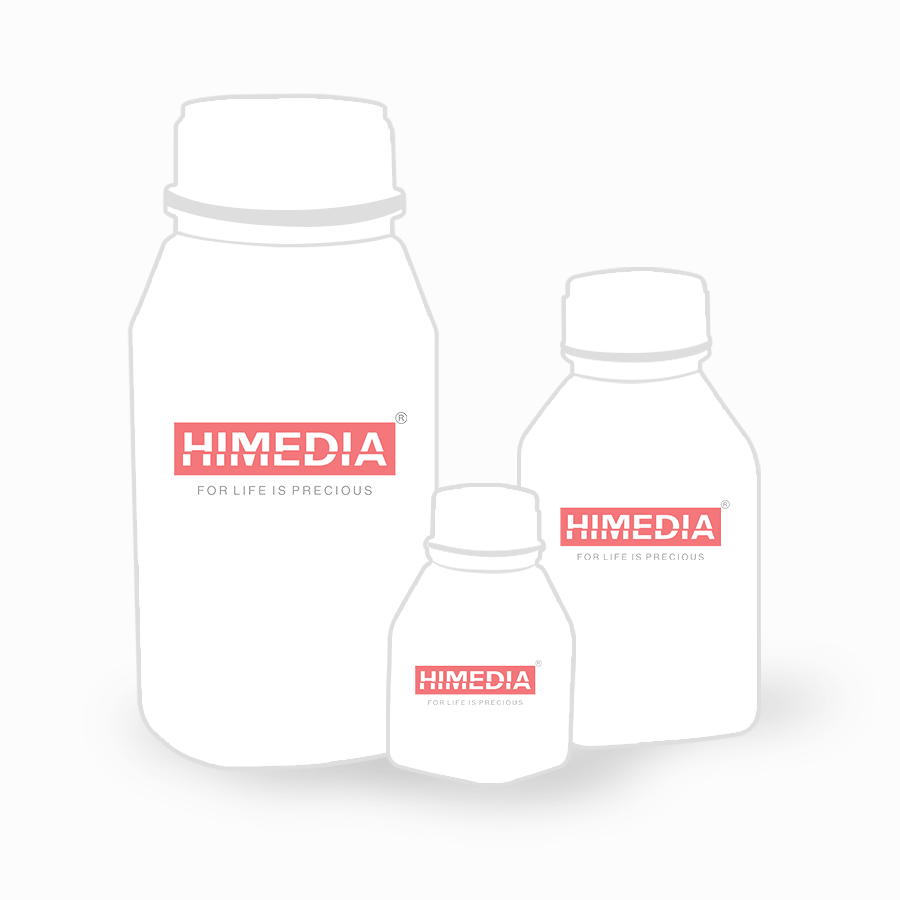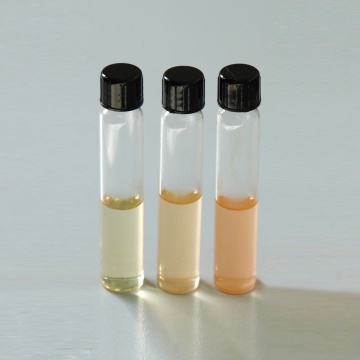 Your enquiry has been submitted
Your enquiry has been submitted
Fluid Selenite Cystine Broth (Twin Pack)
Intended Use
This medium is recommended as an enrichment medium for the isolation of Salmonellae from food and clinical specimens such as faeces, urine or other pathological materials. The composition and performance criteria are in accordance with ISO 6579-1: 2017.
Composition**
As per ISO 6579-1
| Ingredients | g / L |
|---|---|
| Part A | |
| Tryptone | 5.000 |
| Lactose | 4.000 |
| Disodium hydrogen phosphate dodecahydrate | 10.000 |
| L-Cystine | 0.010 |
| Part B | |
| Sodium hydrogen selenite | 4.000 |
Final pH ( at 25°C): 7.0±0.2
**Formula adjusted, standardized to suit performance parameters
Directions
Suspend 4.0 grams of Part B in 1000 ml distilled water. Add 12.97 grams (the equivalent weight of dehydrated medium per litre) Part A medium. Warm to dissolve the medium completely. Distribute in sterile test tubes. Sterilize in a boiling water bath or in a free flowing steam for 10 minutes. DO NOT AUTOCLAVE. Excessive heating is detrimental. Discard the prepared medium if large amount of selenite is reduced. (Indicated by red precipitate at the bottom of tube/bottle).
Caution : Sodium hydrogen selenite (Sodium bi-selenite) is very toxic, corrosive agent and causes teratogenicity and hence should be handled with great care. Upon contact with skin, wash immediately with a lot of water.
Principle And Interpretation
Selective inhibitory effects of selenite were first demonstrated by Klett (1). Guth (2) used it to isolate Salmonella serotype Typhi. Leifson studied selenite and formulated a medium. Fluid Selenite Cystine Medium is a modification of Leifson’s (3) formula with added cystine (4). The formulation corresponds to that recommended by the AOAC (5) for the detection of Salmonellae in foodstuff, particularly egg products. It is included by APHA (6,7), USP (8). This medium is recommended by ISO Committee (9) and FDA BAM (10) as a selective enrichment medium for the detection of Salmonellae.
Selenite Cystine Broth is useful for detecting Salmonella in the nonacute stages of illness when organisms occur in the faeces in low numbers and for epidemiological studies to enhance the detection of low numbers of organisms from asymptomatic or convalescent patients (11).
Tryptone provide nitrogenous substances. Lactose maintains the pH in medium as selenite is reduced by bacterial growth and alkali is produced. An increase in pH lessens the toxicity of the selenite and results in overgrowth of other bacteria. The acid produced by bacteria due to lactose fermentation serves to maintain a neutral pH. Phosphate maintains a stable pH and also lessens the toxicity of selenite. L-cystine improves recovery of Salmonellae. Enriched broth is subcultured on solid medium.(12)
Type of specimen
Food samples.
Specimen Collection and Handling
Processesing : (9)
Pre-enrichment : Samples (25 grams in 225 ml) are pre-enriched in Buffered Peptone Water (M1494I) and incubated at 35°C to 37°C for 16 to 20 hours.
Selective enrichment: 10 ml of pre-enriched sample is inoculated in Fluid Selenite Cystine Broth (Twin Pack) (M1533I). Incubate at 35°C to 37°C for 24 h.
Isolation : The culture thus obtained is then plated on Brilliant Green Agar w/Phosphate (M971S). Incubate at 35°C to 37°C for 24 h.
Confirmation : Biochemical and serological tests are performed for confirmation.
Warning and Precautions
Read the label before opening the container. Wear protective gloves/protective clothing/eye protection/face protection. Follow good microbiological lab practices while handling specimens and culture. Standard precautions as per established guidelines should be followed while handling specimens. Safety guidelines may be referred in individual safety data sheets.
Limitations
- DO NOT AUTOCLAVE. Excessive heating is detrimental.
- Do not incubate the broth longer than 24 hours as inhibitory effect of selenite reduces after 6 - 12 hours of incubation (11).
Performance and Evaluation
Performance of the medium is expected when used as per the direction on the label within the expiry period when stored at recommended temperature.
Quality Control
Appearance
Part A : Off-white to light yellow Part B : White to cream homogeneous free flowing powder
Colour and Clarity of Prepared medium
Light yellow clear to slightly opalescent solution
Reaction
Reaction of [(1.3% w/v) Part A and (0.4% w/v) Part B] at 25°C. pH : 7.0±0.2
pH
6.80-7.20
Cultural Response
Cultural characteristics observed after an incubation at 35 - 37°C for 18 - 24 hours when subcultured on MacConkey Agar (M081).
| Organism | Inoculum (CFU) | Recovery (increase in numbers) | Colour of Colony |
|---|---|---|---|
| Escherichia coli ATCC 25922 (00013*) | 50-100 | little-none | pink w/ bile ppt |
| Salmonella Choleraesuis ATCC 12011 | 50-100 | luxuriant | colourless |
| Salmonella Typhi ATCC 6539 | 50-100 | luxuriant | colourless |
| Salmonella Typhimurium ATCC 14028 (00031*) | 50-100 | luxuriant | colourless |
Key : *Corresponding WDCM numbers.
Storage and Shelf Life
Store between 10-30°C in a tightly closed container and the prepared medium at 15-30°C. Use before expiry date on the label. On opening, product should be properly stored dry, after tightly capping the bottle in order to prevent lump formation due to the hygroscopic nature of the product. Improper storage of the product may lead to lump formation. Store in dry ventilated area protected from extremes of temperature and sources of ignition. Seal the container tightly after use. Product performance is best if used within stated expiry period.
Disposal
User must ensure safe disposal by autoclaving and/or incineration of used or unusable preparations of this product. Follow established laboratory procedures in disposing of infectious materials and material that comes into contact with sample must be decontaminated and disposed of in accordance with current laboratory techniques (13,14).
References
- Klett A., 1900, Zeitsch Fer Hyg. Und. Infekt, 33: 137.
- Guth F., 1916, Zbl. Bakt. I. Orig., 77:487.
- Leifson E., 1936, Am. J. Hyg., 24(2) : 423.
- Salfinger Y., and Tortorello M.L. Fifth (Ed.), 2015, Compendium of Methods for the Microbiological Examination of Foods, 5th Ed., American Public Health Association, Washington, D.C.
- AOAC, 1978, Bacteriological Analytical Manual,5th ed., AOAC, Washington D.C.
- APHA, 2001, Standard Methods for the Examination of Dairy Products, 17th ed., APHA Inc., Washington, D.C.
- North W.R. and Bartram M.T., 1953, Appl. Microbiol., 1:130.
- United States Pharmacopoeia, 2019, U. S. Pharmacopeial Convention, Inc., Rockville, MD. 9.
- Microbiology of the food chain — Horizontal method for the detection, enumeration and serotyping of Salmonella — Part 1: Detection of Salmonella spp, 2017, ISO 6579-1.
- BAM Media M134: Selenite Cystine Broth, FDA BAM, 2017.
- Kelly, Brenner and Farmer, 2003, Manual of Clinical Microbiology, 8th ed. Lennett et al. (Eds.), ASM, Washington, D.C.
- Chattopadhyay W. and Pilford J. N., 1976, Med. Lab. Sci., 33:191.
- Isenberg, H.D. Clinical Microbiology Procedures Handbook 2nd Edition
- Jorgensen, J.H., Pfaller, M.A., Carroll, K.C., Funke, G., Landry, M.L., Richter, S.S and Warnock., D.W. (2015) Manual of Clinical Microbiology, 11th Edition. Vol. 1.
| Product Name | Fluid Selenite Cystine Broth (Twin Pack) |
|---|---|
| SKU | M1533I |
| Product Type | Regular |
| Physical Form | Powder |
| Origin | Animal |
| Packaging type | HDPE |
| References | 1. Klett A., 1900, Zeitsch Fer Hyg. Und. Infekt, 33: 137. |
| Customized Product Available | No |








